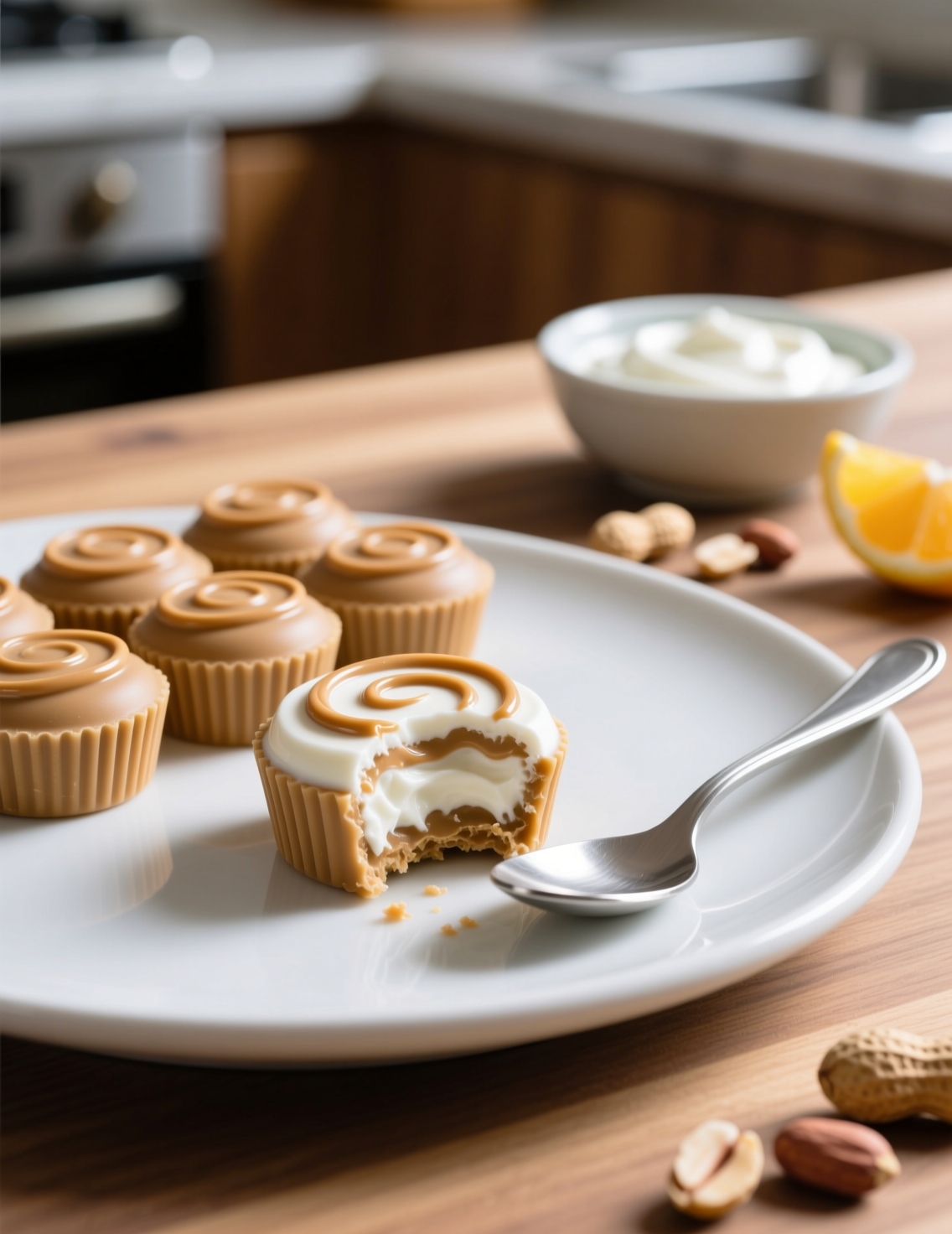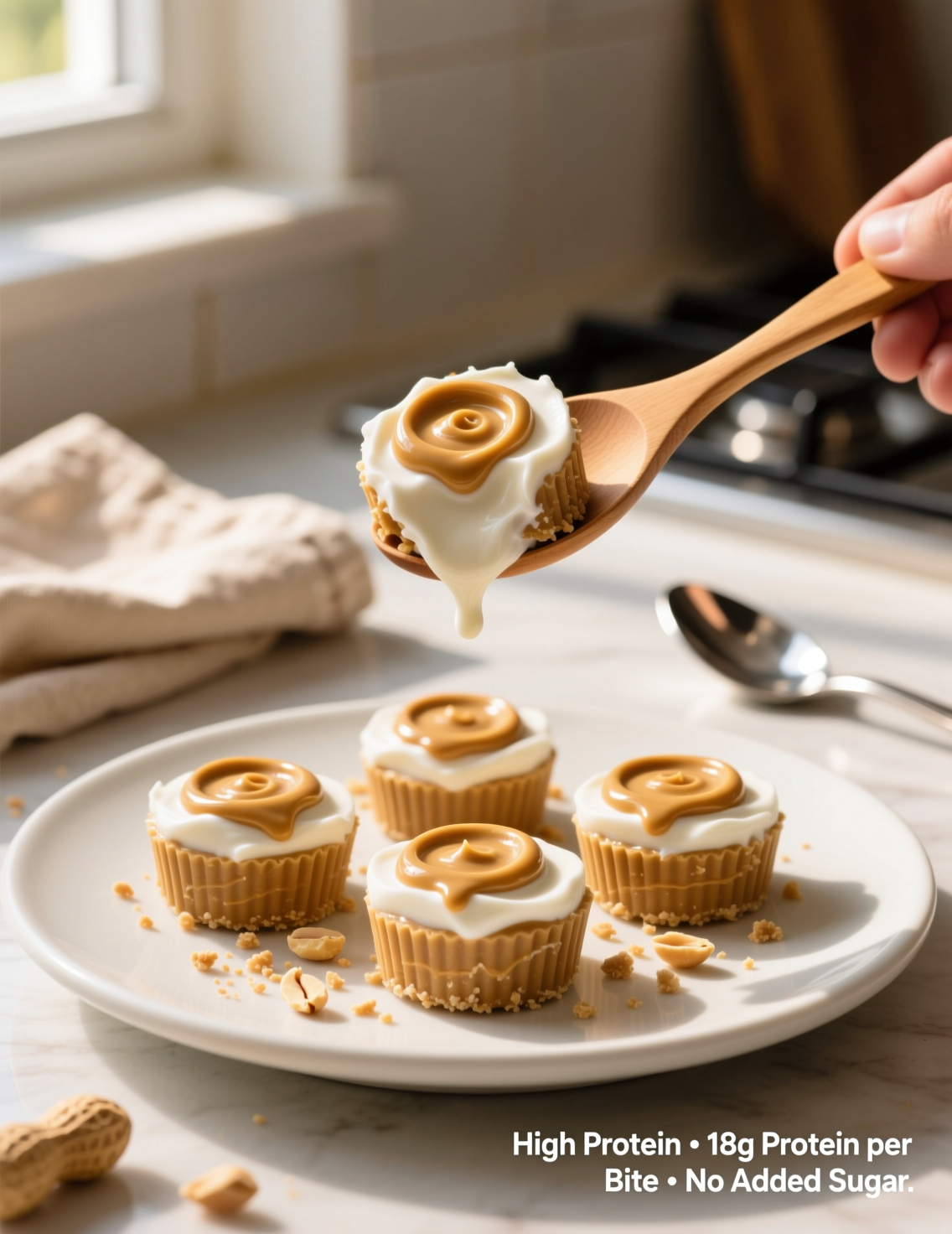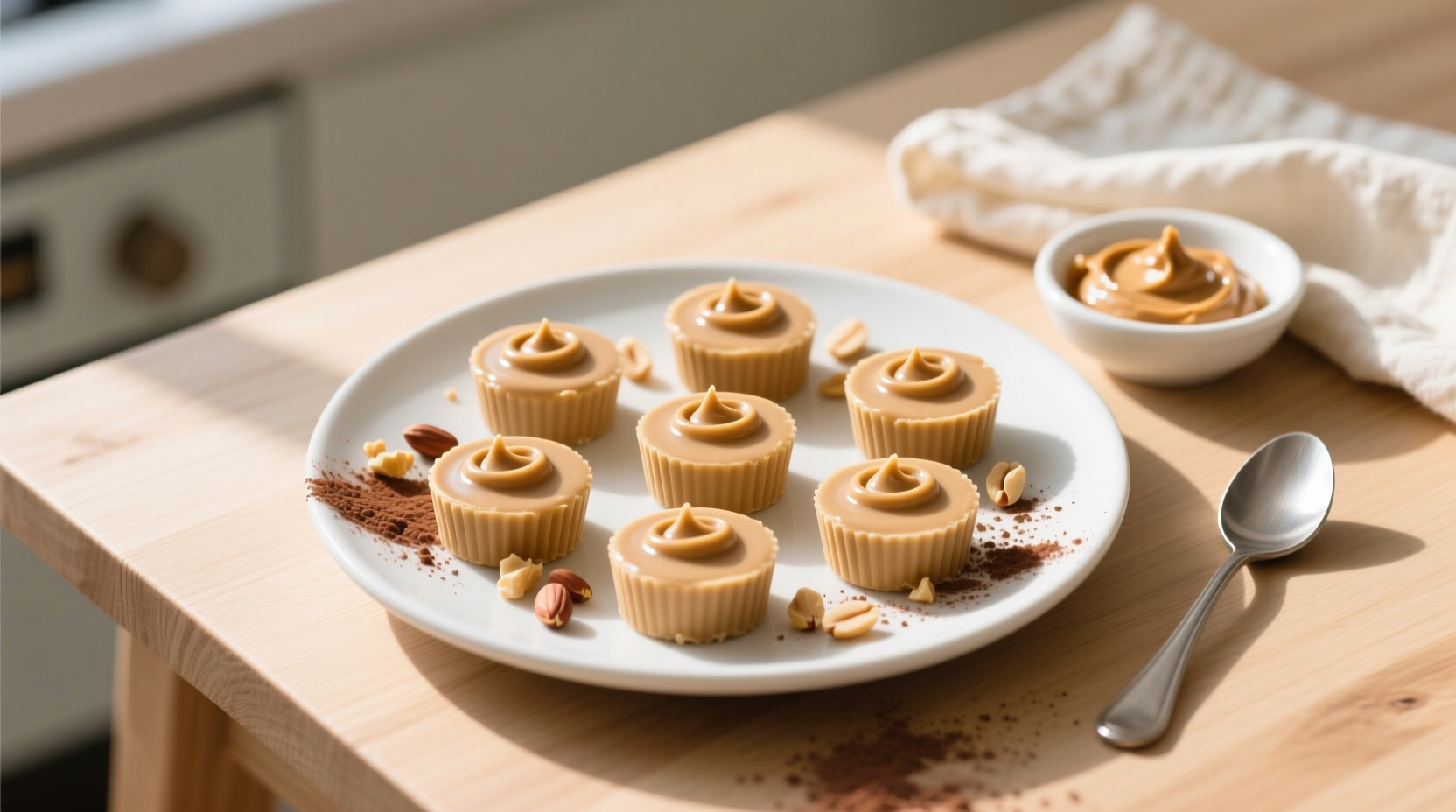Ever tried a snack that’s cold, creamy, packed with protein, and somehow tastes like dessert but isn’t loaded with junk? That’s the magic of frozen peanut butter Greek yogurt bites. They’re small, they’re snackable, and they deliver a surprisingly powerful punch of nutrition for something you can whip up in under 20 minutes. And if you think this is just another random TikTok food trend, nope. There’s actually a good deal of science behind why these bites work so well for recovery, satiety, and keeping energy steady throughout the day.
Why Frozen Yogurt Bites Make Sense in a Protein-Centered Diet
Protein is still the star of modern nutrition. In fact, a 2022 study from The American Journal of Clinical Nutrition reported that adults who consistently consume 1.2–1.6 grams of protein per kilogram of bodyweight not only preserve lean muscle but also have lower cravings throughout the day. Peanut butter and Greek yogurt together create a nutrient synergy—healthy fats, slow-digesting protein, and just enough carbs to fuel activity.
What makes frozen bites better than, say, a regular protein bar? Two words: digestibility and satisfaction. Cold textures slow down how fast you eat. That naturally enhances satiety signals. Plus, freezing yogurt reduces lactose reactivity for some folks. The texture turns custardy, more indulgent, while still being nutrient-dense.
Ingredients You’ll Actually Need
Most recipes online strip this down too much. You need balance, not just a frozen blob of yogurt. Here’s a pro-level breakdown for 6 servings:
- 2 cups full-fat Greek yogurt (higher fat prevents ice crystallization)
- ½ cup natural peanut butter (unsweetened if possible)
- 2 tbsp whey protein powder (vanilla blends best)
- 3 tbsp pure honey or maple syrup
- 1 tsp vanilla extract
- Pinch of sea salt
- Optional: ¼ cup mini dark chocolate chips or chopped roasted peanuts
Each bite (assuming you make 12 medium bites, two per serving) clocks around 10–12 grams of protein, depending on your yogurt and protein powder. That’s not shabby for something that feels like a sweet treat.
Step-by-Step: Technique Over Shortcut
Let’s be honest—most home cooks just stir everything in a bowl and freeze. But that gives icy, chalky, unevenly flavored bites. The trick? Whip and layer.
- Warm peanut butter slightly. Just 15 seconds in the microwave makes it blend smoother with yogurt.
- In a chilled mixing bowl, whip Greek yogurt with whey until fluffy. Incorporating air changes the final frozen texture from hard to creamy.
- Fold in the peanut butter, honey, vanilla, and salt. Don’t stir aggressively—gentle folding prevents over-deflation.
- Line a silicone mold or mini muffin tin with parchment liners. This matters, otherwise you’ll be prying frozen cement from metal cups.
- Spoon mixture evenly. Tap tray on counter to release trapped air.
- Sprinkle chocolate chips or peanuts on top for crunch contrast.
- Freeze at least 3 hours.
Professional note: Freezing too quickly at sub-zero temperatures prevents large ice crystal formation, which is why commercial gelato machines taste creamier. At home, your freezer works fine, just don’t overload it with other hot items during the process.

The Science Behind the Creamy Texture
Greek yogurt contains casein protein, a slow-digesting molecule that naturally thickens as it cools. Peanut butter contributes emulsifying fats, which prevent water from separating. That’s why this combo feels almost like a cheesecake bite when frozen. The addition of whey protein powder isn’t just for numbers—it creates micro air pockets during whipping, giving softness even straight from the freezer.
An overlooked detail: fat percentage of yogurt. Nonfat yogurt produces ice shards. You want at least 5% milkfat to mimic professional frozen dessert texture. I’ve tested both, and the difference is night and day.
Nutritional Breakdown per Serving (2 Bites)
- Calories: ~220
- Protein: 20–24 g
- Fat: 12 g
- Carbohydrates: 14 g
- Fiber: 2 g
That’s comparable to many packaged protein bars but without fillers, gums, or palm oil. It’s also gluten-free and can be dairy-free if swapped with coconut yogurt and plant protein powder, though texture will shift slightly.
When to Eat These Bites
The obvious use is as a post-workout recovery snack. But timing can shift benefits. Have one before bed? Casein from yogurt helps sustain amino acid release overnight, which supports muscle repair. Eat mid-afternoon? You’ll dodge that 3 p.m. crash without hitting the vending machine. I’ve even seen pro athletes use similar yogurt-based bites as pre-game snacks—cold foods can feel refreshing before intense activity.
Common Mistakes to Avoid
One mistake: over-sweetening. Adding too much honey or syrup raises sugar load and cancels out the slow-digesting benefit. Keep sweetness subtle, almost background. Another mistake: using low-quality peanut butter. Many brands add hydrogenated oils, which stiffen weirdly when frozen. Go for natural peanut butter where oil separation is visible—it blends smoother and freezes creamier.
And don’t freeze in big blocks. Smaller bites equal faster freezing, less ice buildup, and better portion control.
Flavor Variations That Actually Work
Food pros rarely stick with a single recipe. Here are some proven riffs:
- Mocha Bites: Add 1 tsp espresso powder + chocolate protein instead of vanilla.
- Berry Swirl: Fold in ¼ cup smashed raspberries for tang and antioxidants.
- Cinnamon Roll: Add ½ tsp cinnamon + drizzle of almond butter + pinch of nutmeg.
- Tropical: Replace peanut butter with almond butter and swirl with mango purée.
The secret? Balance acidity with creaminess. If adding fruit, keep sugar low. If adding chocolate, offset bitterness with vanilla extract. Always think in terms of taste triangles—sweet, salty, creamy.
Frozen Storage and Shelf Life
Professionals often overlook storage details, but it changes outcomes. These bites last up to 3 weeks in an airtight container. Beyond that, freezer burn creeps in. To avoid frost buildup, wrap the tray tightly with cling film before transferring to containers. Also, don’t thaw at room temperature for long—Greek yogurt breaks down fast when exposed to heat, giving a grainy texture.
Best method: let sit 5 minutes at room temperature before eating. This slight tempering enhances flavor and bite.
Why They Outperform Packaged Protein Snacks
Most commercial protein snacks use stabilizers like glycerin, sorbitol, or acacia gum to maintain softness. Homemade frozen bites don’t need any of that. Instead, you’re relying on natural food chemistry. Studies also show that satiety is higher when protein is paired with healthy fat compared to protein alone. That’s exactly what peanut butter delivers here.
And cost-wise, it’s a fraction. Average protein bar: $2–$3 each. Homemade Greek yogurt bite: roughly $0.80 per serving. Professionals appreciate not only flavor but efficiency, and this snack nails both.
Addressing Misconceptions
Some think frozen yogurt bites can’t be “high protein” without adding powders. Not true. Two cups of Greek yogurt alone provide 40+ grams of protein. Add peanut butter and you’re already past 50. Powder is only necessary if you want to concentrate macros further.
Another misconception: fat makes it unhealthy. Reality—dietary fat slows glucose release and improves satiety. Multiple studies, including Nutrients Journal 2021, confirm that higher fat yogurt promotes better weight management outcomes than fat-free. It’s about context, not demonizing fat.
The Emerging Trend of Freezer Snacks
Freezer-friendly, portion-controlled snacks are exploding in popularity. Market data from Grand View Research projects frozen snack sales to grow 6.2% annually through 2030. The appeal is simple: make-ahead, longer storage, and convenient grab-and-go options. High-protein yogurt-based bites fit squarely into this category, aligning with consumer demand for health plus indulgence.
Food professionals should see this as a window—whether developing recipes for clients, meal prep guides, or food product innovations. Frozen bites are the bridge between functional nutrition and sensory pleasure.

Conclusion
High protein frozen peanut butter Greek yogurt bites aren’t just a kitchen hack. They’re a well-balanced snack rooted in nutrition science and practical cooking technique. For athletes, they’re recovery gold. For busy professionals, they’re a pre-portioned, guilt-free indulgence. For chefs and recipe developers, they’re a canvas for endless flavor play.
Make them small, make them creamy, keep the balance right. The lesson here isn’t just about a recipe—it’s about how thoughtful preparation turns ordinary ingredients into something extraordinary. And that’s the kind of food worth repeating, week after week, bite after bite.
FAQs
What are frozen peanut butter Greek yogurt bites?
They are small, high-protein, frozen snacks made from Greek yogurt and peanut butter.
How many servings does this recipe make?
This recipe makes 6 servings, with 2 bites per serving.
Can I use low-fat Greek yogurt?
Yes, but full-fat yogurt gives a creamier texture and better freeze stability.
How much protein is in each serving?
Each serving contains about 20–24 grams of protein.
Can I make these bites dairy-free?
Yes, swap Greek yogurt with coconut or plant-based yogurt and use plant protein powder.
How long should I freeze the bites?
Freeze at least 3 hours for firm, set bites.
Can I add chocolate or nuts?
Yes, sprinkle mini chocolate chips or chopped nuts for texture and flavor.
How long do they last in the freezer?
Up to 3 weeks in an airtight container.
Are these bites good for post-workout?
Absolutely, they provide protein and healthy fats for recovery.
Can I eat them straight from the freezer?
Yes, but letting them sit 5 minutes slightly softens them and enhances flavor.

Mariana is a passionate home cook who creates delicious, easy-to-follow recipes for busy people. From energizing breakfasts to satisfying dinners and indulgent desserts, her dishes are designed to fuel both your body and hustle.
When she’s not in the kitchen, she’s exploring new flavors and dreaming up her next recipe to share with the Foodie Hustle community.

